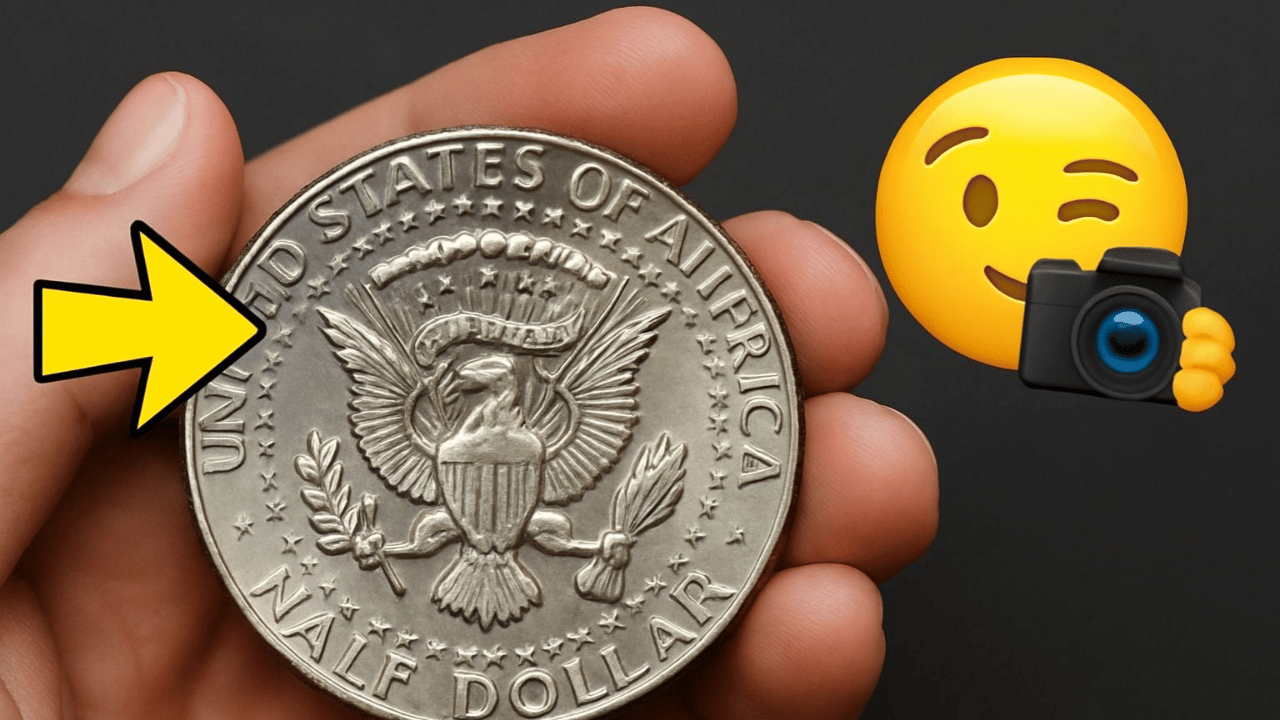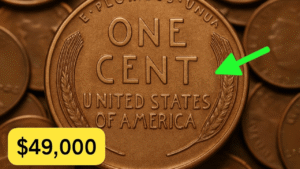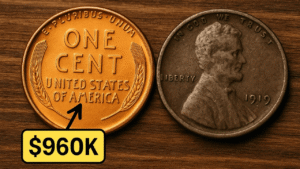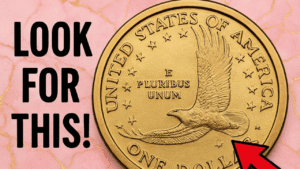You’re elbow-deep in your junk drawer—half looking for batteries, half procrastinating on real life—when your fingers brush something cold, heavy, and unmistakably coin-shaped.
You pull it out. It’s a Kennedy Half Dollar. “Huh,” you think, “Cool.” Flip it. See 1964. Shrug. Toss it back in with the expired coupons and crusty paper clips.
Hold up. BIG mistake. Because that dusty little coin? It might just be worth $5.9 million. Not joking. Not clickbait. Not a typo. This is a real story, and if you’re lucky, it could be your story.
Why the 1964 Kennedy Half Dollar Even Exists
Let’s rewind.
JFK was assassinated in November 1963. Within months, the U.S. Mint created a half dollar in his honor. The coin was first released in 1964, struck in 90% silver. They made a ton—over 400 million that year alone.
So yeah, most 1964 Kennedy Half Dollars? Not rare. You can buy one for like $10–$20 depending on condition.
But…
Somewhere in the chaos of grief, production changes, and shifting metal compositions, something rare slipped through the cracks.
The Proof That Shouldn’t Have Been
Here’s the twist: The Mint also made special proof versions of the 1964 Kennedy Half Dollar—these are collector’s coins, not meant for circulation. They were struck with extra care, extra shine, and sharper details. Most of these proof coins were 90% silver.
But at least one?
Was 99.9% pure silver.
And not just that—it somehow left the Mint. Ended up in the wild. Which is like someone walking out of the Louvre with a stolen da Vinci and nobody noticing.
The coin surfaced decades later. Experts confirmed it wasn’t a fake, a forgery, or a modern trick. It was real. And it sold for $5.9 million in a private deal.
Okay, So What Makes That Coin So Valuable?
Let’s break it down.
| Feature | Why It Matters |
|---|---|
| Year: 1964 | First year of JFK Half Dollar; historical importance |
| Proof Strike | Sharper details, mirror finish, frosted edges |
| Composition: 99.9% Silver | Extremely rare; possibly one-of-a-kind |
| Condition | Likely near-perfect; stored or preserved carefully |
| Circulation Slip-Up | Accidentally released into the public by mistake |
| Demand | High among collectors, especially for rare anomalies |
This combo of rarity, mystery, and minting oddity created a perfect storm. Think of it like the Honus Wagner baseball card of coins.
What to Look For In Your Coin
Alright, scavenger hunters, here’s your checklist:
- Date: Must be 1964.
- Finish: Look for mirror-like surfaces, frosted designs, and super-sharp details.
- Weight: Standard 90% silver half dollars weigh around 12.5 grams. A purer silver coin might weigh slightly differently (you’d need a precise scale).
- Mint Mark: Look under Kennedy’s neck. A small “D” means Denver Mint, blank means Philly. Proofs usually came from Philadelphia.
- Magnet Test: Silver’s non-magnetic, so it shouldn’t stick (though this won’t prove purity).
- Don’t Clean It. Ever. Cleaning removes original toning, detail, and value. Just don’t.
If any of these line up, it’s time to get professional eyes on it.
What to Do If You Think You’ve Got a Winner
Step 1: Don’t freak out.
Step 2: Don’t post it all over Facebook with a grainy photo and “How much is this worth??” captions.
Step 3: Contact a certified coin dealer, preferably one affiliated with:
They’ll help you verify if it’s authentic, grade its condition, and potentially broker a sale if it’s truly special.
And if it’s not? Hey, worst case, you’ve got a $10 hunk of silver. Not bad.
Coins That Became Accidental Millionaires
The Kennedy Half Dollar isn’t the only coin to make headlines.
- 1943 Bronze Lincoln Penny: Meant to be steel (due to WWII), but a few bronze blanks slipped through. One sold for $1.7 million.
- 1970-S Small Date Penny: A subtle variation, but worth thousands if you spot it.
- 2004 Wisconsin Extra Leaf Quarter: A tiny leaf added by accident? That’s a $6,000 coin now.
Moral of the story? Minting errors + history = treasure.
Real Talk: Are You Sitting on a Fortune?
Probably not. Statistically, the odds are low.
But they’re not zero.
Coins change hands constantly. A proof coin could’ve been handed out as lunch money by mistake in the ‘70s. Or passed down in a jar. Or hidden in a shoebox from your dad’s coin collection.
That’s why it’s always worth a second glance. Because the people who did find one? They weren’t treasure hunters.
They were regular folks. Just like you. Who didn’t throw the coin back in the drawer.
FAQs
Are all 1964 Kennedy Half Dollars valuable?
Not really. Most are worth $10–$20 for silver content. Only rare proofs or errors hit big numbers.
How do I tell if mine is a proof?
Look for sharp details, mirror finish, and frosted design. Proofs also usually came in special cases.
What’s the best way to get it checked?
Through PCGS or NGC. Some local coin dealers can help, but always verify their reputation.
Is cleaning it ever okay?
Hard no. Even wiping it with a cloth can destroy value.



